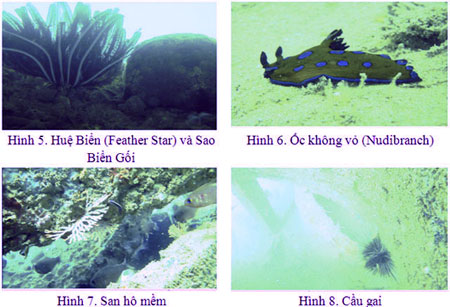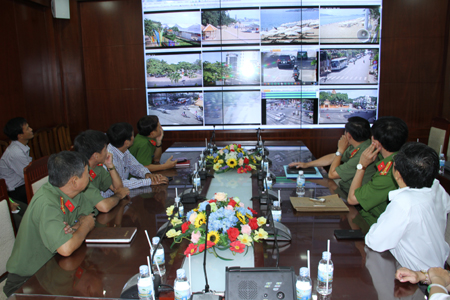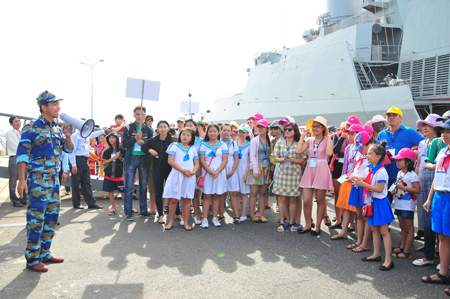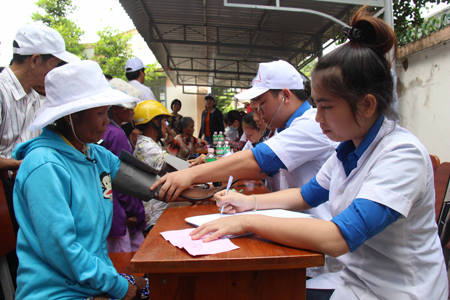
The study "Building artificial reefs in Nha Trang Bay" by MA. Nguyen Van Nhuan at the Institute for Marine Science & Fishing Technology, Nha Trang University has just been examined and approved...
The study “Building artificial reefs in Nha Trang Bay” by MA. Nguyen Van Nhuan at the Institute for Marine Science & Fishing Technology, Nha Trang University has just been examined and approved, providing more opportunities for the protection and regeneration of coastal marine resources.
 |
| Marine creatures appear in artificial reefs. |
The thesis has been conducted since 2013 with the desire to create artificial reefs suitable for the natural conditions, environment and resources in Nha Trang sea waters to serve as a base for local officials to choose and apply in an effort to protect and promote the marine life and ecological system.
Accordingly, 150 artificial reefs using concrete blocks have been placed covering 50,000 m2 of the seabed in eastern Vinh Hoa Ward, Nha Trang City. The site is considered to be suitable for the model in terms of depth, low seabed slopes, hard ground, many dead coral reefs and stable flows.
A recent survey shows that the sea waters used to be inhabited by 28 fish species belonging to 19 families and 5 orders, mainly of small size with an average density of 8 - 9 individuals/ m2. After a period of artificial reef construction, the density and composition of aquatic species inside and around the reefs have gradually increased.
Specifically, the fish density was reported to be 57 individuals/ group in July 2014 after 2 months of the model and 1,463 individuals/ group in June 2015 after 1 year. The fish belong to 91 species, 36 families and 10 orders. The fish creatures have increased thrice. Most of them are coral reef fish, 82% of which are smaller than 10cm, 14% are 10-20cm and 4% are larger than 20cm.
The survey also shows that the artificial reefs are also a habitat for large-size seabed creatures with 13 species found so far. Most of them are mollusks feeding on mosses on concrete blocks. The lobster offspring density in the artificial reef site has also risen with 26-54 fish/ 1,000m2. Particularly, fish of high economic value, larger than 20cm, such as Painted sweetlip and Russell's snapper, can also be seen since the reefs were built.
These are signs of recovery of marine recourses. The thesis has been found to meet the purposes and feasibility requirement in coastal marine resources protection and regeneration in Nha Trang Bay, according to Khanh Hoa Council of Science & Technology.
However, more time is needed to assess the effectiveness. Further research and application are required to clearly define the species in terms of distribution, settlement and reproductiveness, according to Nguyen Van Nhuan. The local authority also needs to build large-scale artificial reefs catering for fishing and recreational tourism. Nevertheless, the development of artificial reefs may result to social conflicts arising from water use dispute among fishing communities and tourism businesses. Therefore, strict coastal management and planning together with specific definition of priority waters classes are required when building artificial reefs.
Luu Khanh
Translated by N.T










